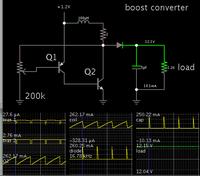neazoi
Advanced Member level 6
Hi I have a commercial uhf fm transceiver that can operate TX/RX at 432MHz. The transceiver has a dual receiver and the RX can operate up to 1300MHz FM, covering the 23cm amateur band (1296MHz).
I am thinking to extend the TX range of it, so that I can TX on 23cm as well.
The simplest solution I am thinking of is a TX tripler (sinse it requires no DC power) in series with the TX output and the antenna.
A simple diode tripler can be used for the purpose https://www.qsl.net/va3iul/Homebrew...as/432MHz_1296MHz_Varactor_Tripler_WA6UAM.gif
The FM deviation will be set to minimum on 432MHz to cope with the tripler.
Instead of building and tuning the output filter, I am thinking of using the mini circuits CBP-1260C+ which can tolerate an input of 0.5W max.
The transceiver mutes the RX when transmitting. I basically transmit on 432MHz (which is multiplied to 1296MHz), whereas I monitor the 1296MHz. My problem is, how do I do the switching from the tripler to the transceiver and antenna? Is it enough to do it like in the sckematic, since the RX is disabled during transmit? I think I must include a diode somewhere, so that the 432MHz tx does does not bypass the tripler.
Any other power-free ideas?
I am thinking to extend the TX range of it, so that I can TX on 23cm as well.
The simplest solution I am thinking of is a TX tripler (sinse it requires no DC power) in series with the TX output and the antenna.
A simple diode tripler can be used for the purpose https://www.qsl.net/va3iul/Homebrew...as/432MHz_1296MHz_Varactor_Tripler_WA6UAM.gif
The FM deviation will be set to minimum on 432MHz to cope with the tripler.
Instead of building and tuning the output filter, I am thinking of using the mini circuits CBP-1260C+ which can tolerate an input of 0.5W max.
The transceiver mutes the RX when transmitting. I basically transmit on 432MHz (which is multiplied to 1296MHz), whereas I monitor the 1296MHz. My problem is, how do I do the switching from the tripler to the transceiver and antenna? Is it enough to do it like in the sckematic, since the RX is disabled during transmit? I think I must include a diode somewhere, so that the 432MHz tx does does not bypass the tripler.
Any other power-free ideas?

